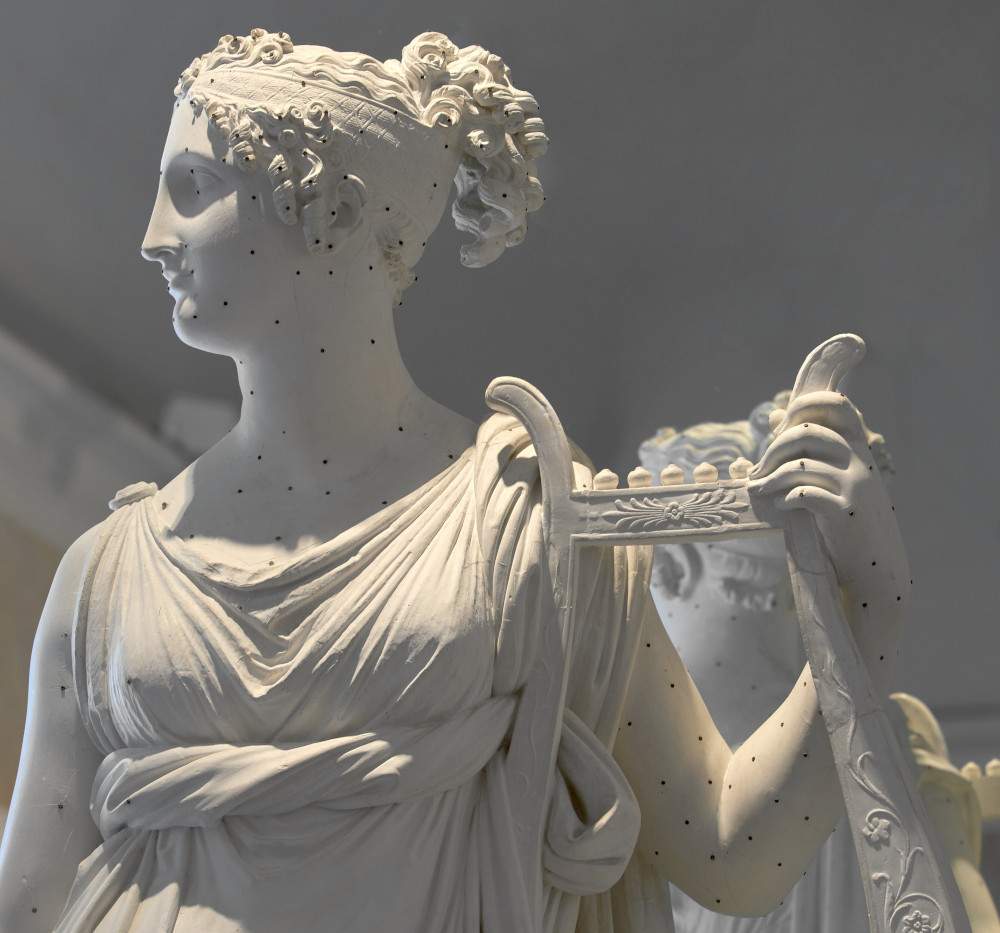On the occasion of the second centenary of the death of Antonio Canova (Possagno, 1757 - Venice, 1822), Villa Carlotta presents the exhibition Canova, novello Fidia, curated by Gianfranco Adornato, Associate Professor of Classical Archaeology at the Scuola Normale Superiore in Pisa, with Maria Angela Previtera, director of Villa Carlotta, and Elena Lissoni, museum curator of Villa Carlotta. On view from Sept. 24 to Dec. 11, 2022, the exhibition compares the artistic poetics of Antonio Canova with that of Phidias of Athens, his “alter ego” from antiquity, inviting the public to embark on an unprecedented journey to rediscover the two authors through a dialogue between the museum’s Canova works and some important loans of archaeological finds from major Italian museums.
Numerous exceptional loans have been made, starting with the torso of the wounded Amazon from the collections of the Royal Museums of Turin, the only version in the world made of basanite (a material mined in the Wadi Hamammat region of Egypt, which is very difficult to work with and very precious) compared with the original plaster cast of Antonio Canova’s Musa Tersicore from the Villa Carlotta collections. The subject of the Amazon can also be appreciated in the form of a herm from the Villa of the Papyri in Herculaneum, now housed in the National Archaeological Museum in Naples, and in a miniature bronze version from the National Archaeological Museum in Florence. Regarding the famous gold and ivory Pheidian statue representing Zeus enthroned and located in his temple at Olympia, on display is one of only two ancient coins that have come down to us, dating from the last years of Hadrian’s reign, depicting the father of the gods. To seal the encounter and dialogue between Phidias and Canova, it was decided to compare the Head of Apollo from the Archaeological Museum in Naples with Canova’s Palamedes, a symbolic work at Villa Carlotta. Completing the itinerary are some casts of Parthenon sculptures from the Brera Academy of Fine Arts, with which Canova had forged a close relationship. It was thanks to the Possagno sculptor’s intervention that the marbles, transported by Lord Elgin from Athens to London, had an authorship and a first-rate place in the history of ancient, modern and contemporary art. Canova, during a visit to London in November 1815, had admired at close quarters “the large figures, in which the artist could display his true knowledge,” stating that “the works of Phidias are true flesh that is, beautiful nature.”
A visit to the exhibition is included in the entrance fee to Villa Carlotta, which is open Monday through Sunday, 10 a.m. to 7 p.m. From Nov. 7 to Dec. 11, while the Villa is closed to the public, it will be possible to visit the exhibition by reservation by writing to segreteria@villacarlotta.it.
For info: www.villacarlotta.it
Image: Antonio Canova, Musa Tersicore (1811; original plaster; Tremezzina, Villa Carlotta, Museum and Botanical Garden)
 |
| Antonio Canova and Phidias compared: an exhibition at Villa Carlotta |
Warning: the translation into English of the original Italian article was created using automatic tools. We undertake to review all articles, but we do not guarantee the total absence of inaccuracies in the translation due to the program. You can find the original by clicking on the ITA button. If you find any mistake,please contact us.